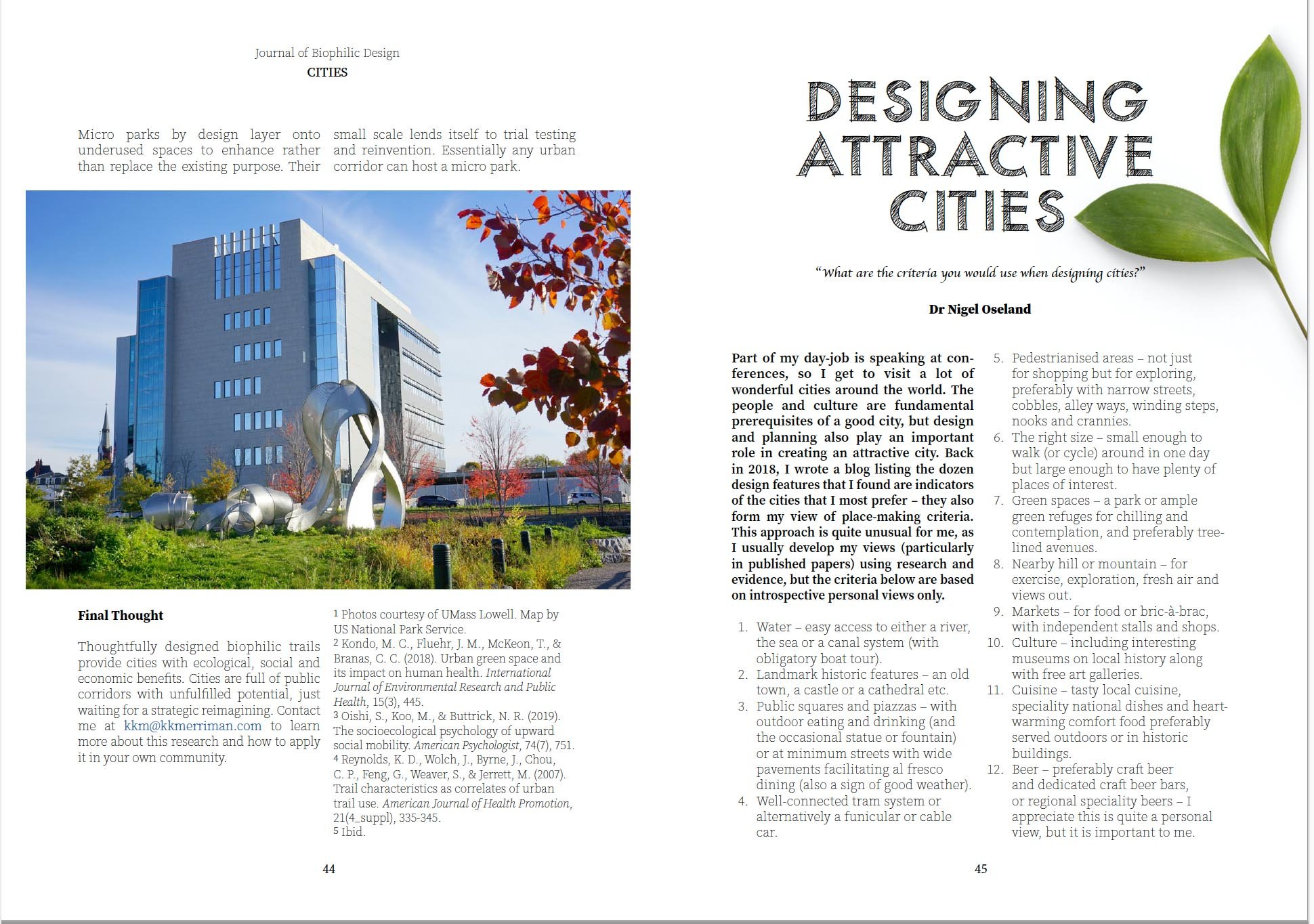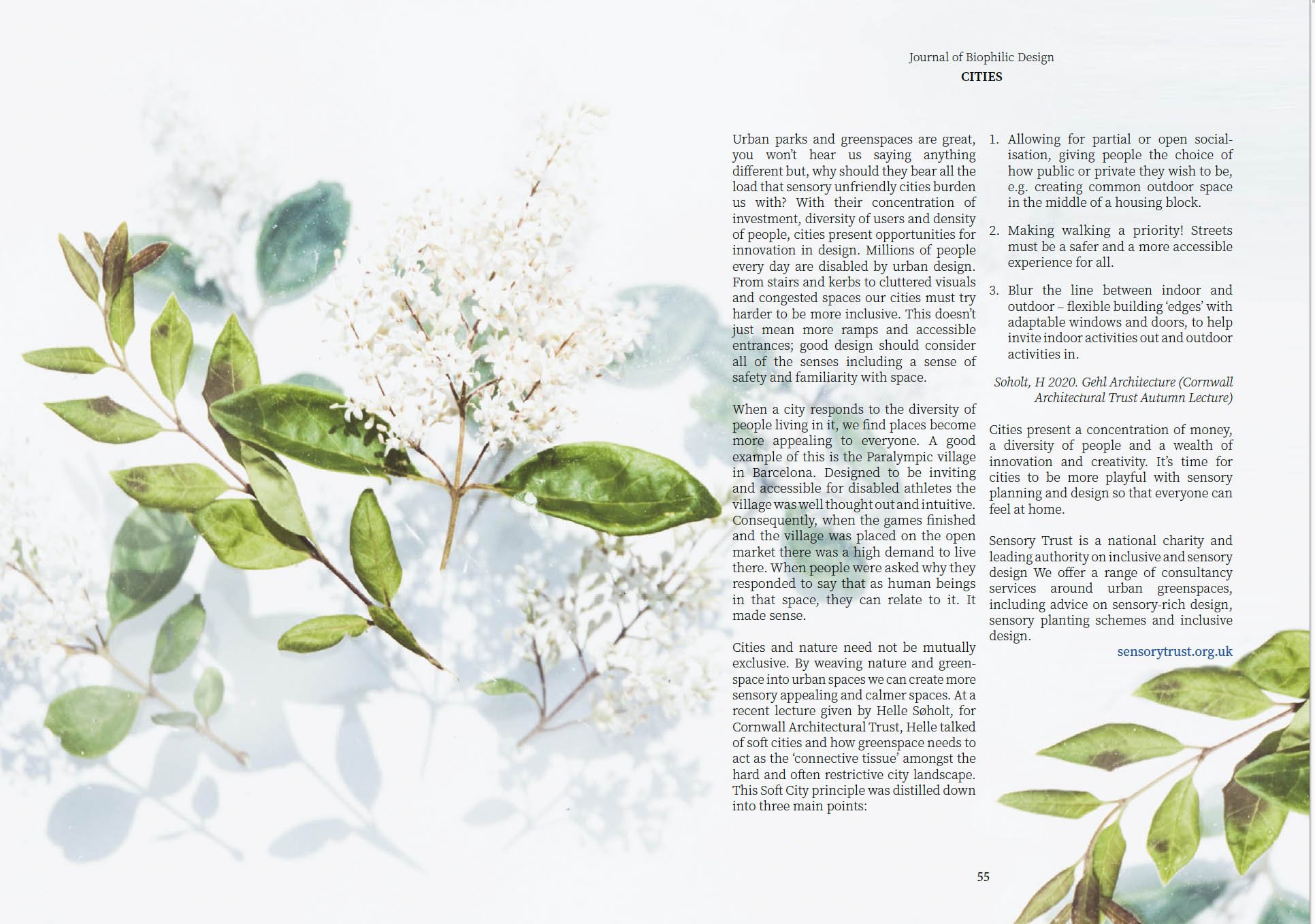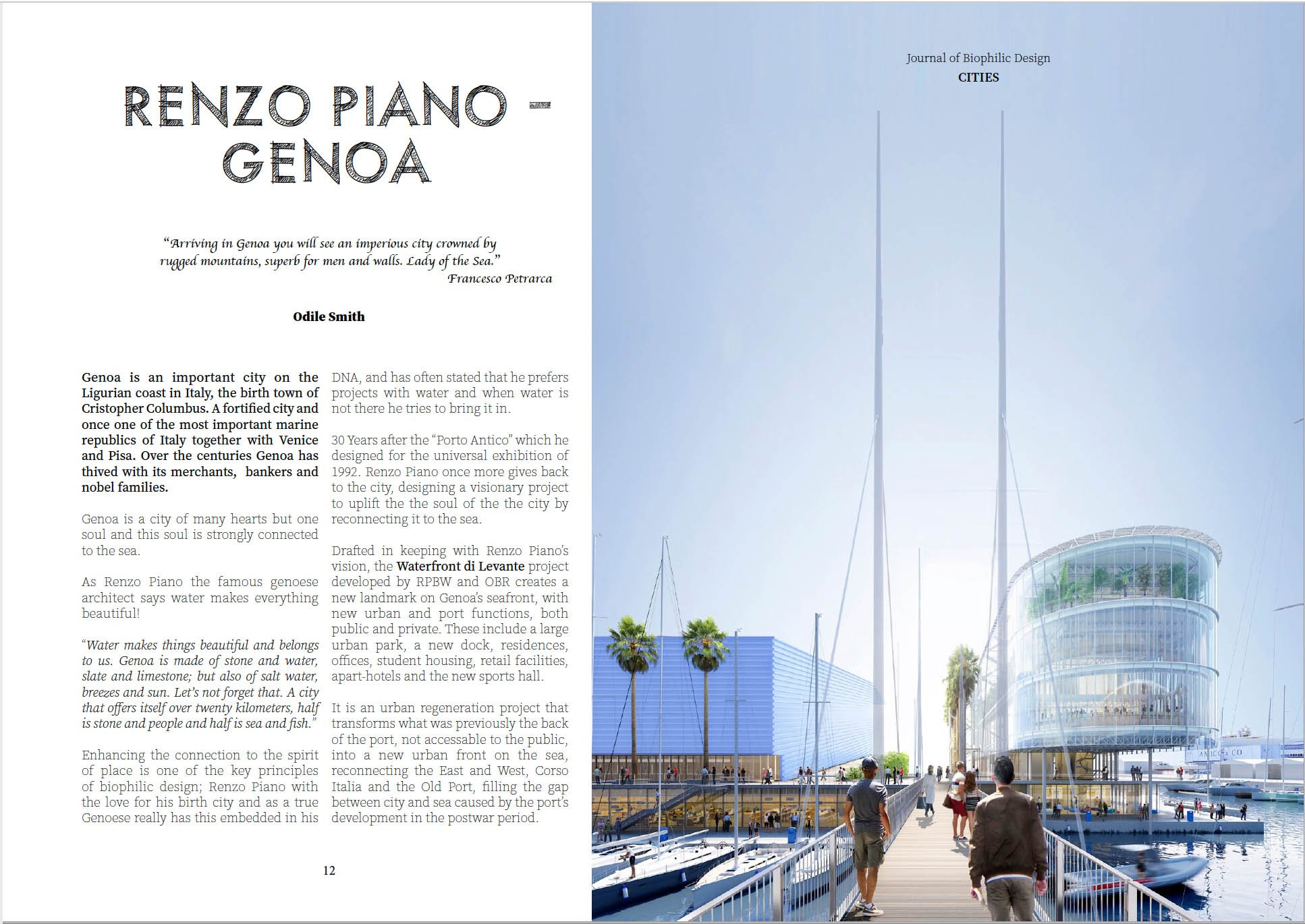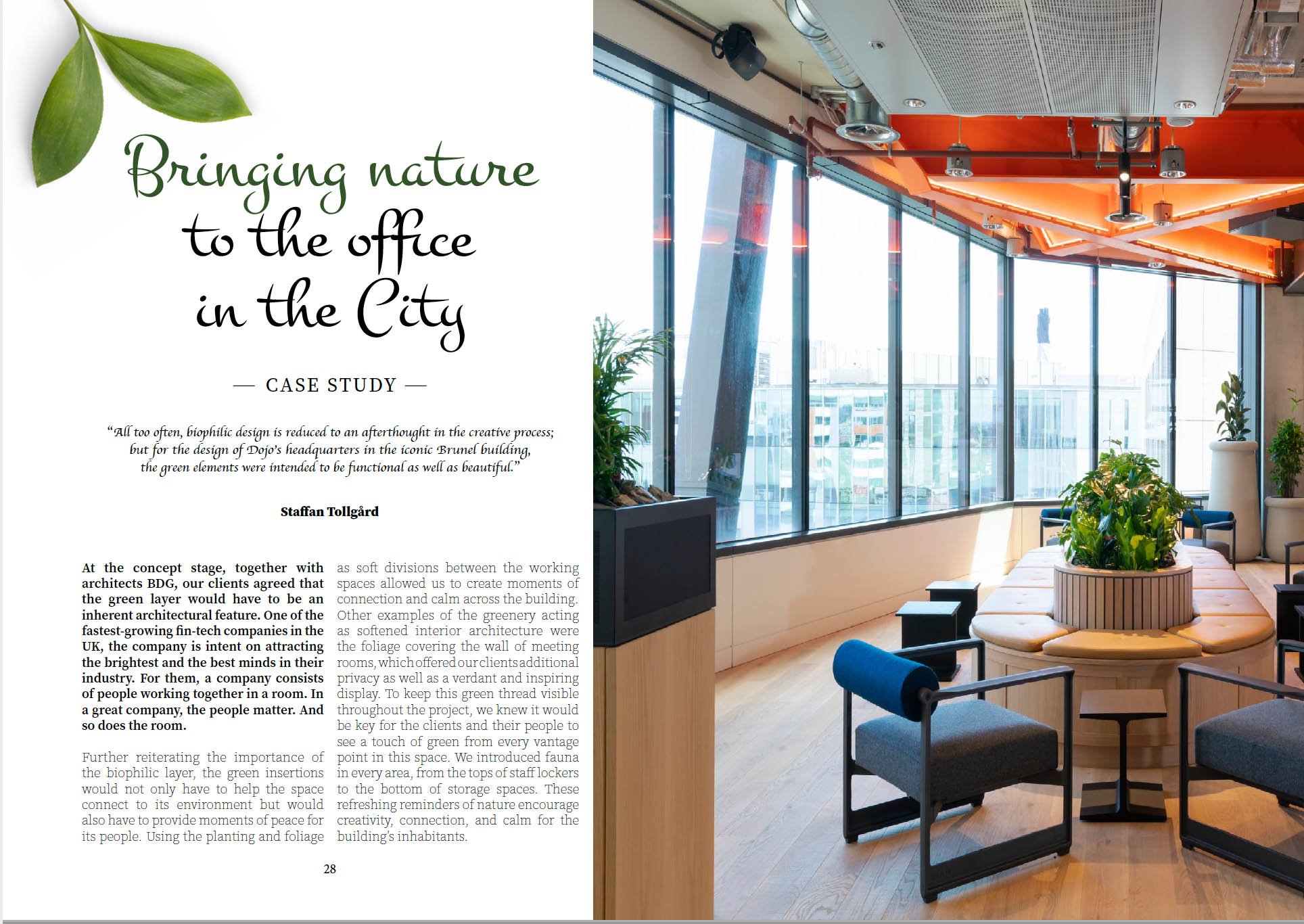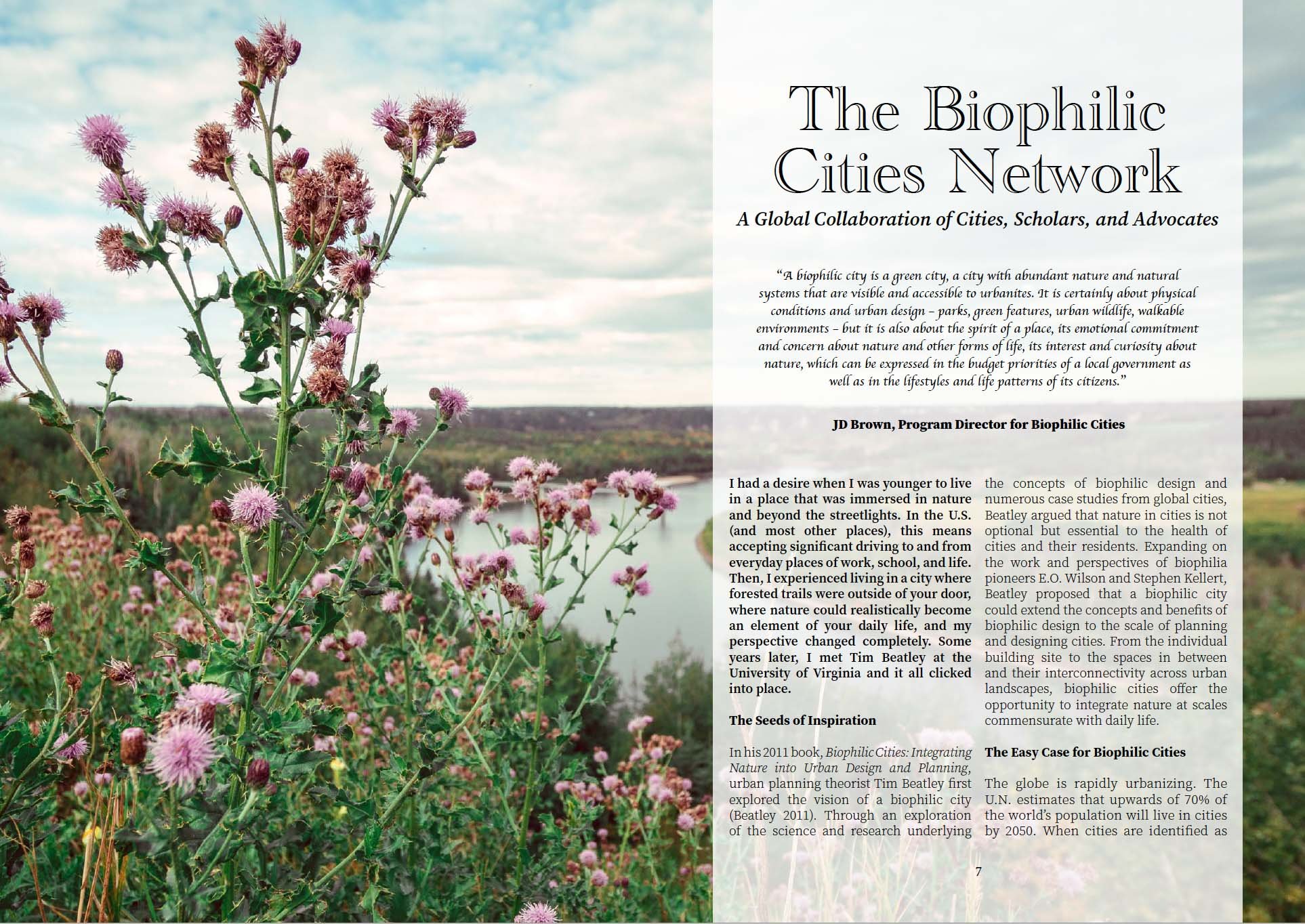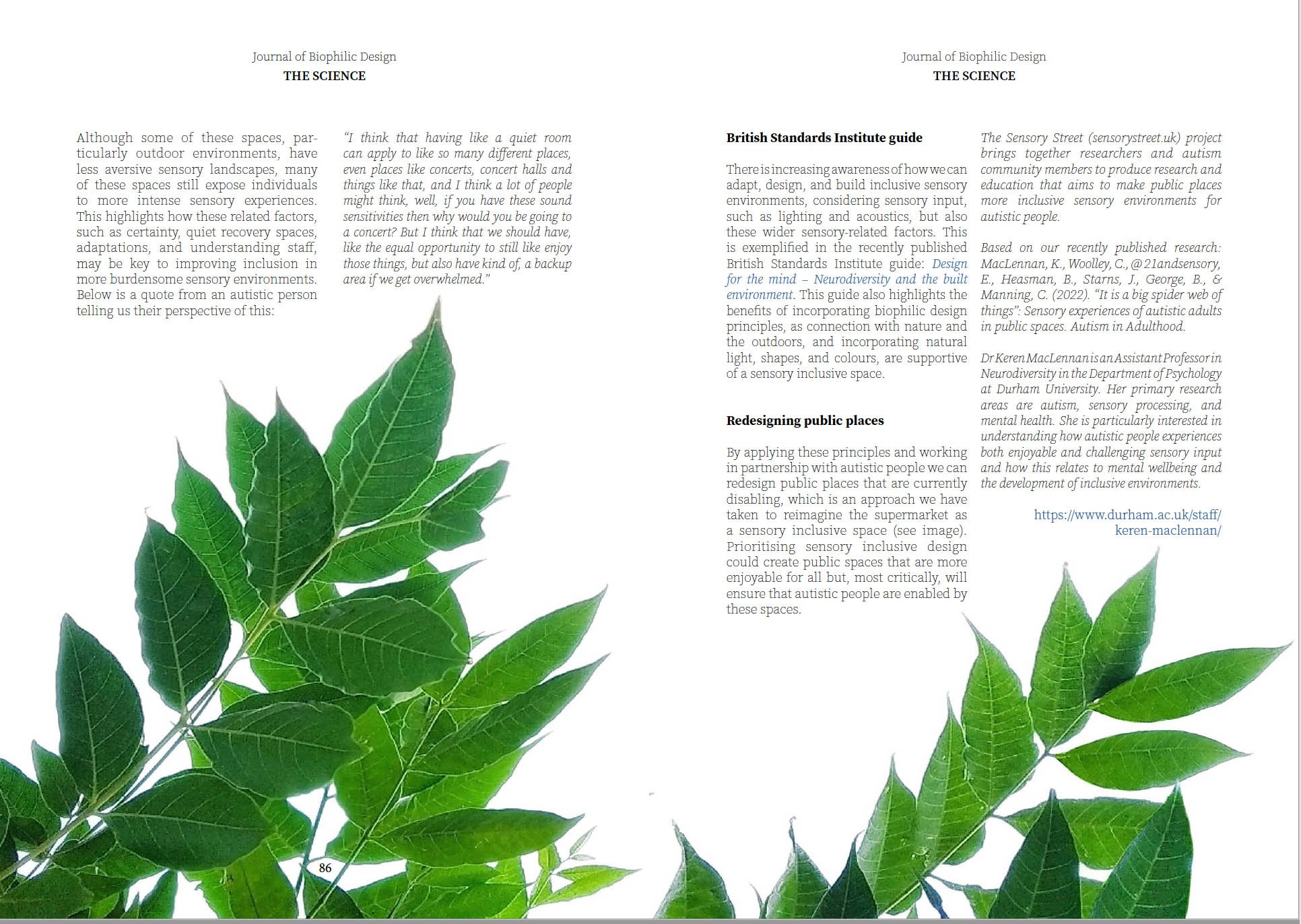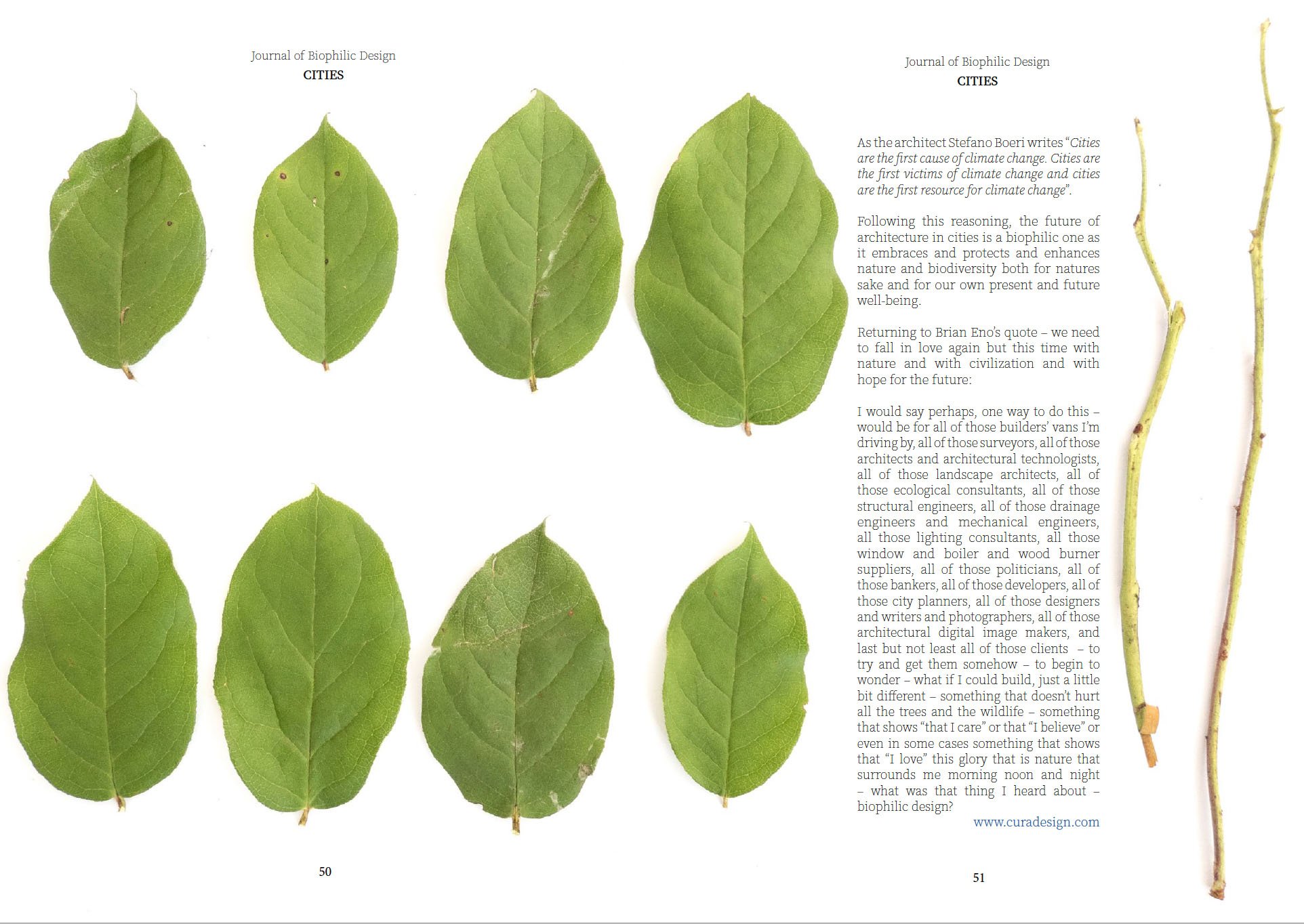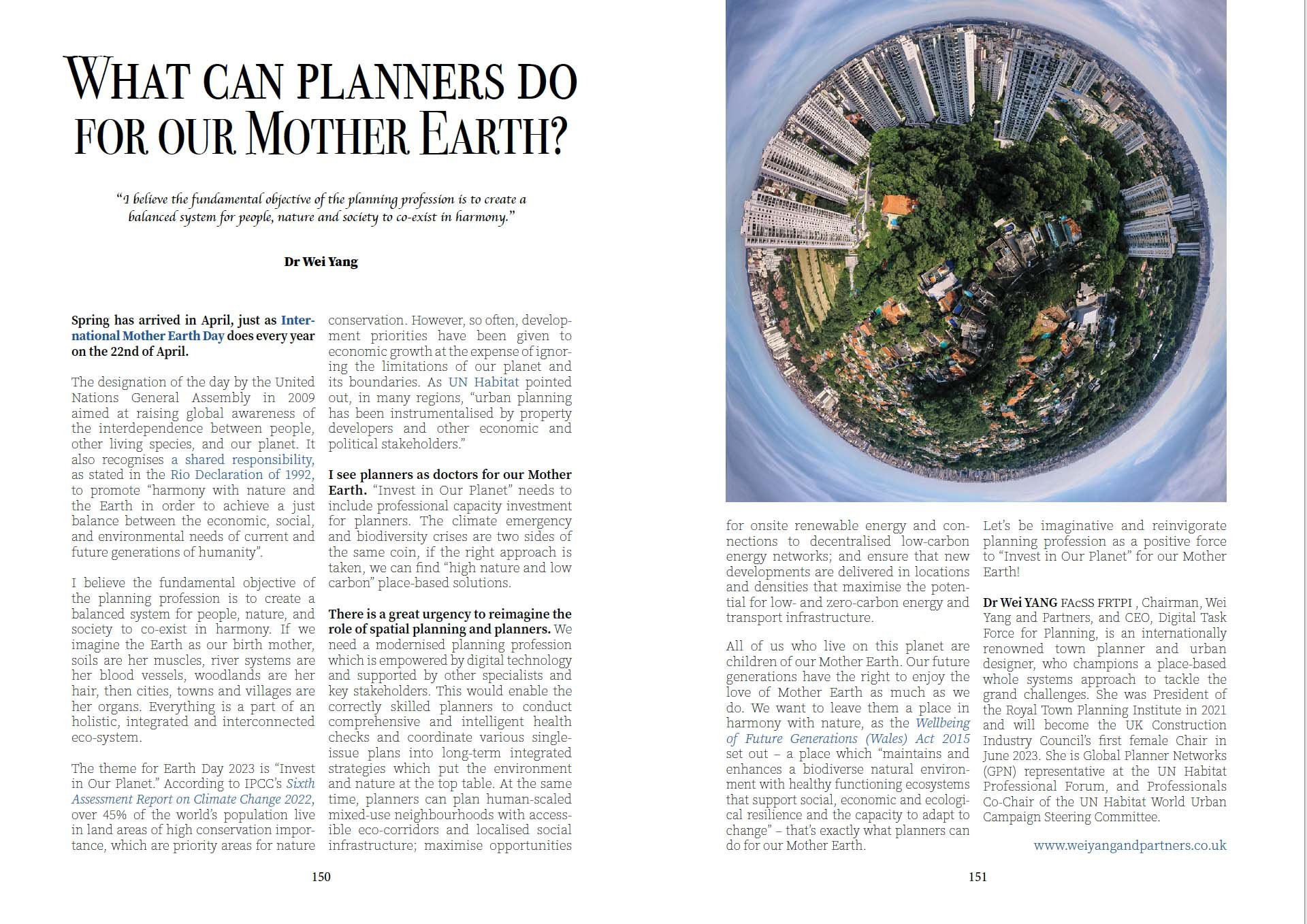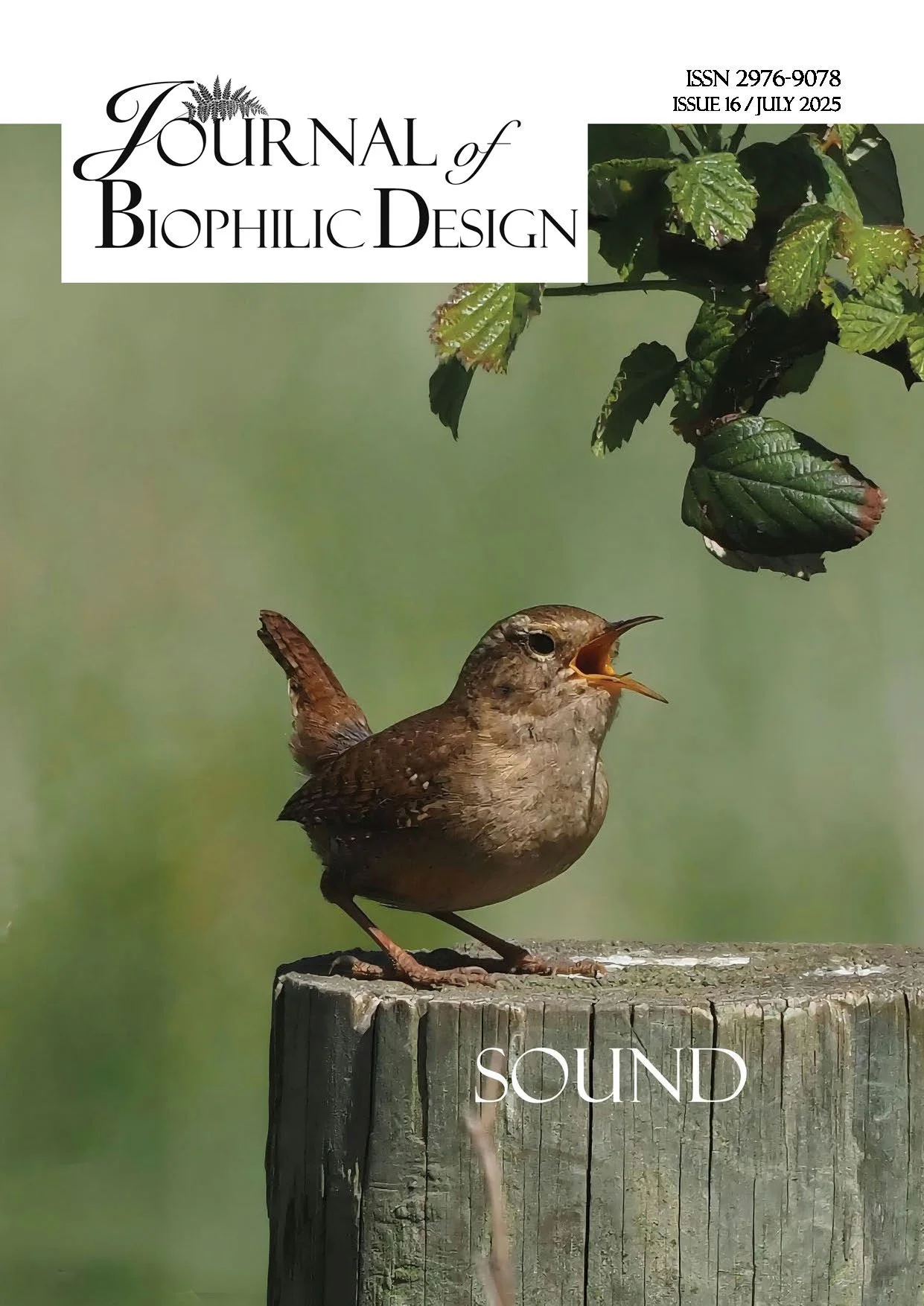Journal of Biophilic Design - Issue 4 - CITIES - PAPERBACK PRINTED VERSION over 180 pages
Journal of Biophilic Design - Issue 4 - CITIES - PAPERBACK PRINTED VERSION over 180 pages
Cities are living systems. From urban design to addressing climate change, Biophilic Design is an essential building block of any city design. In this fourth issue of the Journal of Biophilic Design researchers, psychologists, designers, architects, town planners all come together to share best practice, ideas, case studies and more. Learn from these shared ideas and research to help your town and city build better.
What does your city look like? Is it green, full of trees, rivers, lakes and ponds teaming with life. Are there walkways and cycle paths that meander across the city encouraging you to abandon the car and motorcycle and enjoy the beauty around you? Is the air clear? Is the noise pollution from the cars absorbed by gorgeous hedgerows and abundant leafy plants? Is there birdsong above your head and butterflies dancing across your path?
In all likelihood it’s a no to most of these questions. There may be elements of it in pockets of certain districts, maybe in those areas where affluence and private funding has enabled landscaping and greater citizen control. But what about for the rest of the city? How do we bring about equity so that everyone has access to nature?
Another reason we advocate implementing Biophilic Design in an urban context is that, as well as creating community spaces, safer walkways and improves wellbeing, it also goes a long way in helping mitigate the adverse effects of climate change. For instance, planting trees helps reduce flooding, reduces temperatures in cities by preventing heat islands, encourages biodiversity and restores natural ecosystems.
The reason we have dedicated a whole issue to Cities and will definitely revisit it in another separate publication in due course (as well as have a regular section in each issue of the Journal), is because if we all put our heads together to explore urban design and encourage a more nature-centred approach, we might inspire greater conversations between us all, whether we are planners, architects, businesses, designers or families and nature-inspired design might then also filter into buildings.
Wouldn’t it be amazing to see nature and nature-inspired design as we walk to and from work, as we approach hospitals, walk to school, relax at lunchtime? It would go some way into giving us a more positive outlook on life and our experiences throughout the day, helping reduce our cortisol levels, blood pressure and actually, you know, bring some joy into our lives. Not every day is perfect, so at least if we can find a moment of respite on our commute then life has to be a little better doesn’t it? And our beautiful planet will love us more too.
Our cities should have all the elements we need to survive, thrive, and flourish. Tree and plant-lined walkways to give us some beauty and calm before we arrive at work, home, or school, as well as pockets of parks and green spaces with benches and meandering paths to allow us some downtime from a busy office, hospital or homelife.
With the statistics saying that 68% of the world’s population will be living in cities by 2050 we really do need to make sure there is the infrastructure in place to ensure we don’t add burden the already burgeoning infrastructures already there.
Making sure we ALL have access to nature and green spaces, with homes and workplaces, healthcare facilities and schools nestled within green spaces. Did you know there is an 80% reduction in crime if there are trees and green spaces in cities? Did you know that we need less anti-depressants if we have trees around us, reducing stress and anxiety?
We also need to create flexible nature-inspired spaces, bring green directly into the city’s buildings themselves, ensuring we take time to have a wander and take time to look around us, look at the trees, hear the bird-song, study the little flowers: observe, absorb, and enjoy what we see.
If you are designing with biophilia at the heart of what you do, thank you for making the environments you create, the lives you improve and the planet happier and healthier. If you have just started on your Biophilic Design journey, then welcome to the movement, together we can make the world a better place to live, work and flourish in.
One of the most exciting aspects of Biophilic Design is that it is based on Science. There is so much research on how and why this wonderfully simple design process has such a phenomenal impact on us. In this regular section, our ‘resident’ Environmental Psychologist Dr Sally Augustin shares thoughts distilled from piles and piles of research, presenting results, suggestions and further reading for you to delve into each month.
If you are an experienced expert on a certain aspect of Biophilic Design, or on how human physiology is impacted by their environment, please get in touch. We are also aiming to co-host a symposium with thought leaders in the not too distant.
Printed on recyled uncoated paper by a lovely environmentally friendly print company. PAPERBACK PRINTED VERSION over 180 pages of full colour nature-inspired design and ideas, just turning these beautiful pages is like a biophilic inspiration.
Did you know you can subscribe and become a member of the Journal and get access to all back issues of the Journal too? https://journalofbiophilicdesign.com/subscribe-as-a-member
Cities are living systems. From urban design to addressing climate change, Biophilic Design is an essential building block of any city design. In this fourth issue of the Journal of Biophilic Design researchers, psychologists, designers, architects, town planners all come together to share best practice, ideas, case studies and more. Learn from these shared ideas and research to help your town and city build better.
What does your city look like? Is it green, full of trees, rivers, lakes and ponds teaming with life. Are there walkways and cycle paths that meander across the city encouraging you to abandon the car and motorcycle and enjoy the beauty around you? Is the air clear? Is the noise pollution from the cars absorbed by gorgeous hedgerows and abundant leafy plants? Is there birdsong above your head and butterflies dancing across your path?
In all likelihood it’s a no to most of these questions. There may be elements of it in pockets of certain districts, maybe in those areas where affluence and private funding has enabled landscaping and greater citizen control. But what about for the rest of the city? How do we bring about equity so that everyone has access to nature?
Another reason we advocate implementing Biophilic Design in an urban context is that, as well as creating community spaces, safer walkways and improves wellbeing, it also goes a long way in helping mitigate the adverse effects of climate change. For instance, planting trees helps reduce flooding, reduces temperatures in cities by preventing heat islands, encourages biodiversity and restores natural ecosystems.
The reason we have dedicated a whole issue to Cities and will definitely revisit it in another separate publication in due course (as well as have a regular section in each issue of the Journal), is because if we all put our heads together to explore urban design and encourage a more nature-centred approach, we might inspire greater conversations between us all, whether we are planners, architects, businesses, designers or families and nature-inspired design might then also filter into buildings.
Wouldn’t it be amazing to see nature and nature-inspired design as we walk to and from work, as we approach hospitals, walk to school, relax at lunchtime? It would go some way into giving us a more positive outlook on life and our experiences throughout the day, helping reduce our cortisol levels, blood pressure and actually, you know, bring some joy into our lives. Not every day is perfect, so at least if we can find a moment of respite on our commute then life has to be a little better doesn’t it? And our beautiful planet will love us more too.
Our cities should have all the elements we need to survive, thrive, and flourish. Tree and plant-lined walkways to give us some beauty and calm before we arrive at work, home, or school, as well as pockets of parks and green spaces with benches and meandering paths to allow us some downtime from a busy office, hospital or homelife.
With the statistics saying that 68% of the world’s population will be living in cities by 2050 we really do need to make sure there is the infrastructure in place to ensure we don’t add burden the already burgeoning infrastructures already there.
Making sure we ALL have access to nature and green spaces, with homes and workplaces, healthcare facilities and schools nestled within green spaces. Did you know there is an 80% reduction in crime if there are trees and green spaces in cities? Did you know that we need less anti-depressants if we have trees around us, reducing stress and anxiety?
We also need to create flexible nature-inspired spaces, bring green directly into the city’s buildings themselves, ensuring we take time to have a wander and take time to look around us, look at the trees, hear the bird-song, study the little flowers: observe, absorb, and enjoy what we see.
If you are designing with biophilia at the heart of what you do, thank you for making the environments you create, the lives you improve and the planet happier and healthier. If you have just started on your Biophilic Design journey, then welcome to the movement, together we can make the world a better place to live, work and flourish in.
One of the most exciting aspects of Biophilic Design is that it is based on Science. There is so much research on how and why this wonderfully simple design process has such a phenomenal impact on us. In this regular section, our ‘resident’ Environmental Psychologist Dr Sally Augustin shares thoughts distilled from piles and piles of research, presenting results, suggestions and further reading for you to delve into each month.
If you are an experienced expert on a certain aspect of Biophilic Design, or on how human physiology is impacted by their environment, please get in touch. We are also aiming to co-host a symposium with thought leaders in the not too distant.
Printed on recyled uncoated paper by a lovely environmentally friendly print company. PAPERBACK PRINTED VERSION over 180 pages of full colour nature-inspired design and ideas, just turning these beautiful pages is like a biophilic inspiration.

